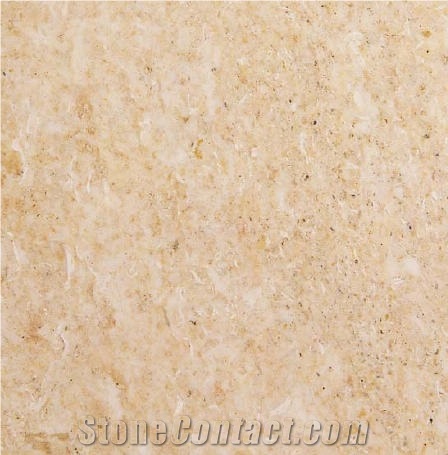Apricena Paglierino Marble
 Italy
(Apricena, Bari, Provincia di Foggia, Puglia)
Italy
(Apricena, Bari, Provincia di Foggia, Puglia)
Apricena Paglierino is an exquisite natural stone often referred to as marble but is technically a limestone. Quarried in Apricena, Bari, in the Provincia di Foggia, Puglia, Italy, it is highly prized for its aesthetic appeal and versatile applications. Here’s a detailed description of its properties, composition, and uses:
Physical and Mechanical Properties:
-
Water Absorption: 0.11%
-
This low water absorption rate indicates the stone's resistance to moisture penetration, making it suitable for both indoor and outdoor applications.
-
Density: 2680 kg/m³
-
The density of stone indicates its compactness and weight, relevant for both installation and load-bearing considerations.
-
Flexural Strength: 17.50 MPa
-
This measures the stone's ability to resist deformation under load, making it appropriate for flooring and wall cladding.
-
Compressive Strength: 169.00 MPa
-
Indicates the ability of Apricena Paglierino to withstand high pressures, ideal for structural purposes.
-
Hardness:
-
While specific hardness values on the Mohs scale aren't provided, limestone generally ranges from 3-4, making it moderately soft compared to other natural stones.
-
Porosity:
-
Apricena Paglierino has relatively low porosity, contributing to its durability and stain resistance.
-
Slip Resistance:
-
The slip resistance largely depends on the finish applied (e.g., polished surfaces may be less slip-resistant compared to honed or textured finishes).
Chemical and Mineral Composition:
- Calcium Carbonate (CaCO3): Majority component
- Silica (SiO2): Minor component
- Iron Oxides (Fe2O3): Contributes to color variations
- Magnesium Carbonate (MgCO3): Present in smaller amounts
- Trace elements: Can include manganese, which influences the warm coloration
Usage:
- Flooring: Due to its elegance and durability.
- Wall Cladding: Both interior and exterior for a high-end look.
- Countertops and Vanity Tops: In bathrooms and kitchens.
- Stairs and Steps: Suitable for both residential and commercial spaces.
- Sculptural and Architectural Elements: Columns, balustrades, and fireplaces.
Maintenance:
- Regular cleaning with a pH-neutral stone cleaner is recommended.
- Sealing can enhance longevity and resistance to stains.
- Avoid using acidic or abrasive cleaners.
Cutting Sizes (cm) and Common Surface Finishes:
-
Standard Slab Sizes: Typically cut in slabs of varying thickness from 2 cm to 3 cm.
-
Tiles: Common sizes include 30x30, 40x40, 60x30, and 60x60 cm.
-
Surface Finishes:
-
Polished: For a glossy, reflective surface adding brilliance to floors and walls.
-
Honed: A matte finish that is smooth but not shiny, offering a more understated look.
-
Brushed: Provides a textured, antique appearance.
-
Tumbled: Offers an aged, rustic appearance.
In conclusion, Apricena Paglierino is a versatile, aesthetically pleasing stone ideal for a variety of architectural and design purposes. Its detailed traits, from composition to mechanical properties, ensure it meets both functional and decorative needs. Proper maintenance and the right choice of surface finish can greatly enhance its lifespan and visual appeal.
AVERAGE TECHNICAL CHARACTERISTICS
- Specific weight: 2.72 g/m³
- Bulk density: 2.68 g/m³
- Water absorption coefficient by weight: 0.11%
- Linear thermal expansion coefficient: 3.53 mm/m °C × 10⁻³
- Compressive strength in natural state: 1,775 kg/cm²
- Compressive strength when water-saturated: 1,670 kg/cm²
- Compressive strength after 20 freeze-thaw cycles: 1,650 kg/cm²
- Elastic modulus (compression): 380,000 kg/cm²
- Wear resistance: 2.79 mm/km
- Impact resistance: 17.5 kg/km
- Degree of compactness: 0.985
- Degree of porosity: 0.015
- Chemical composition: ~98% CaCO₃
The request includes: 1. surface finished, size 2. quantity required







